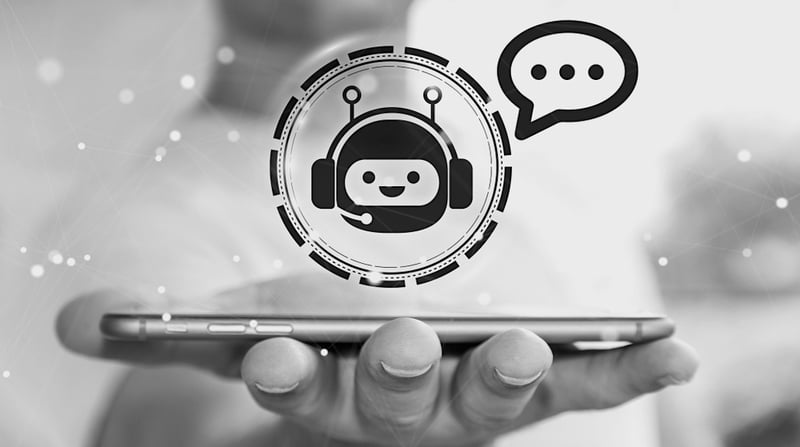
image credit: sdecoret/shutterstock.com
When visiting a marketing website, you may notice a small pop-up message from a smiling robot, in the corner of the page. No, this isn’t a sign that robots are taking over the Internet; but it is a sign of a growing trend in the b2b marketing scene. Chatbots encourage website visitors to interact with artificial intelligence and receive helpful, automated assistance.
Gartner has already predicted that by 2021, businesses will increase spending on chatbots by 50%. Here are some of the ways chatbots have grown in b2b marketing and will continue to develop in the future.
How chatbots and marketing automation go hand-in-hand
Chatbots run on a script and use inputs that are pre-programmed. It can be difficult to program a chatbot to correctly respond to a user’s question; but using similar virtual assistant technology can help. Virtual assistants use machine learning to process information that allows them to learn and improve their ability to understand text. These bots may be smart, but they need to be fed accurate, real-time data to work properly.
Marketers often have to deal with many tedious tasks, such as updating lead information, organizing email campaigns, and creating segmented lists for their contacts. Artificial intelligence--including marketing automation devices--allows for significantly improved time management. Combine this automation with chatbots on your website; you'll have a small, virtual assistant to help schedule meetings and set reminders when a lead revisits your website.
Chatbot technology makes qualifying leads simpler and more efficient
While AI is updating your current lead data, chatbots can work to qualify new leads by responding to user questions and providing real-time assistance. You can even set up specific, lead-qualifying questions for visitors, in order to pass only the most qualified leads over to a live chat.
When a visitor chats with one of your bots, the bot searches your database to see if that person is already a contact for your business. If it’s an existing contact, the messaging it uses will differ from contacting a new lead. Chatbots can also re-engage with previous contacts, providing updates to new contact information in a much more timely fashion.
Once you have some qualified leads interested in your business, here are examples of how to align your chatbot’s questions with different stages of a lead’s lifecycle stages:
- A lead downloads an ebook about SEO best practices. Your chatbot may offer additional SEO tips from a blog post on optimizing for organic reach.
- A lead clicks through several brand development blogs. A response from a chatbot may be to offer a downloadable ebook with brand development strategies.
- A lead signs up for a webinar that is scheduled a week away. You can set your chatbot to send a reminder when the date gets closer. Or, have them suggest relevant content to prepare them in the meantime, such as a quick guide to marketing automation tools.
Chatbots compliment your current marketing form strategy
Your chatbots should follow similar logic to your current marketing form strategy. This means keeping conversations simple and only asking as many questions as needed from a lead. Chatbots take the logical questions and steps from your forms and add a more conversational approach to asking a visitor for contact information.
A step-by-step conversation with a chatbot may look something like this:
“Hello. My name is Robert. Who am I assisting today?”
(the visitor shares their name)
“Nice to meet you. Is there any information I can help you find?”
(the visitor is looking for information about AI and automation tools)
“I have a new case study about marketing automation you may find helpful. May I please have your email address so I may share it with you?”
(the visitor recognizes the friendly gesture and offers an email address)
“Thank you! I hope you find this case study useful. Let me know if you have any additional questions.”
(the visitor receives their new case study and becomes a qualified lead)
You don’t want to overwhelm a potential new lead by asking them for too much personal information; a simple first name and email is usually enough. Have your chatbots encourage and help your visitors the same way you would in a natural conversation. Once the lead is recognized as qualified, your chatbot can send them over to live chat.
Thinkdm2 is a b2b digital marketing and branding agency that’s always ready to keep clients up-to-date with the latest tech trends. Looking for additional articles about marketing technology? Find more great content by visiting our blog.



